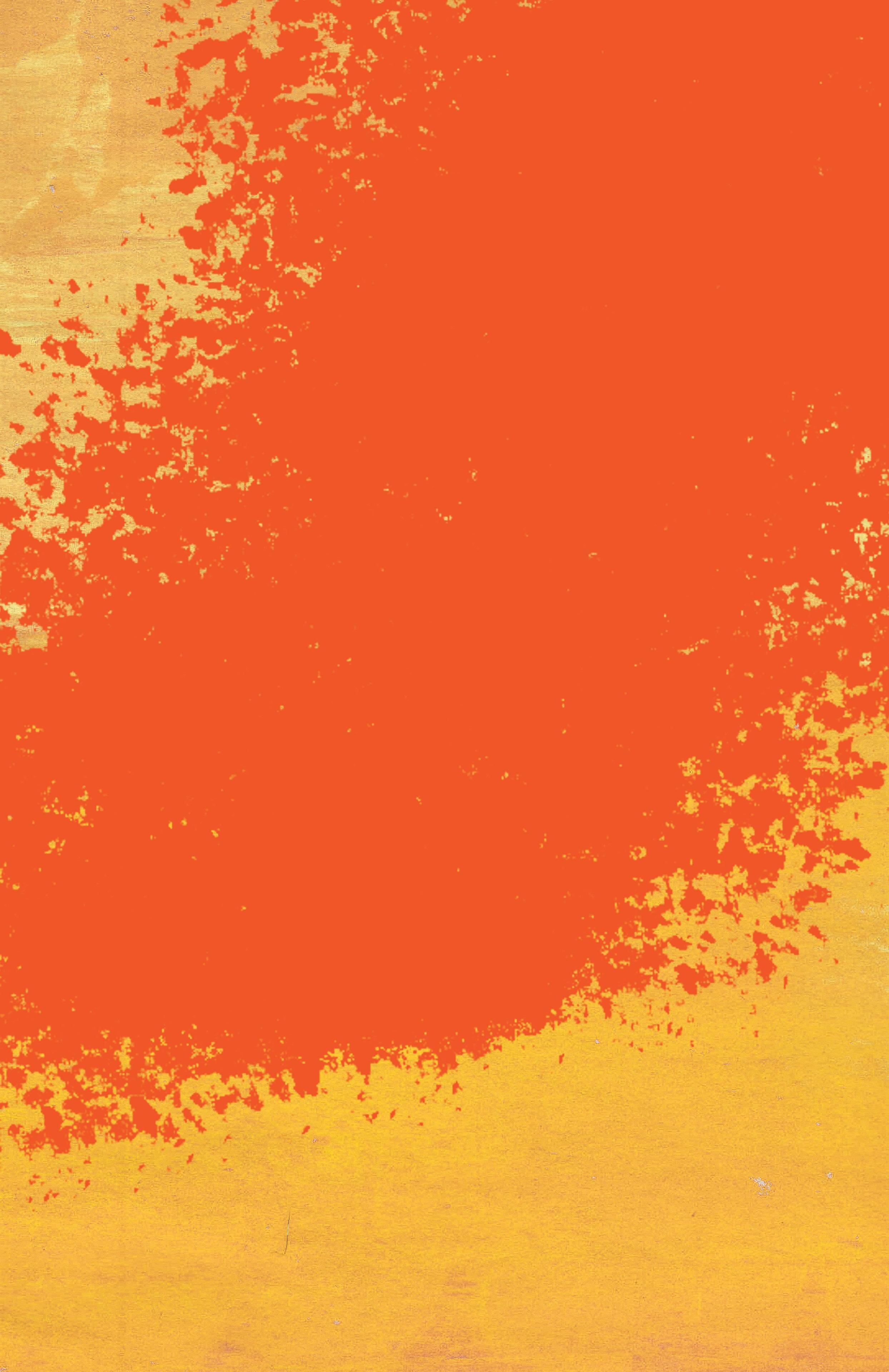May 2023

Design: Max Canner
Cover: Kah Yangni

May 2023

Design: Max Canner
Cover: Kah Yangni
In writing our book, Let This Radicalize You, we set out to create the kind of resource that we wish had existed for us when we were new to organizing. The book is a mashup of manifesto, advice, and lessons learned, and we hoped it would offer some accompaniment to newer organizers as they find their way. In the book, we share a great deal of wisdom from organizers with many years of experience. We cherish the lessons they shared with us, and we believe that their stories and insights will do newer organizers a world of good. But as the publication of our book approached, Mariame had the idea that we should create another, complimentary project — a zine that would uplift the voices of organizers with less than three years of experience. We loved this idea because our movements require a diversity of voices and a reciprocal exchange of ideas if we are to grow and thrive together. So we sponsored a writing contest with the intention of selecting four essays to feature in the publication. We received over 40 submissions and had a hard time selecting only four essays, so we decided to feature eight.
As Kelly describes in the introduction to Let This Radicalize You, our own dialogues about organizing, at a time when Mariame was a seasoned organizer and Kelly had less experience, were part of the evolution of our friendship and of the work we did together. While Kelly took many lessons on board during that time, Mariame also learned from Kelly, who had her own creative ideas, life experiences, and insights. This exchange made our shared imaginings possible. It is in the spirit of that exchange, and the understanding that we all have lessons to share, that we wanted to create this zine. The organizers who submitted pieces for this project have embodied that spirit in their work, sharing a spectrum of experiences that hold important lessons and reminders for us all. From Yamali Rodas’s story of displacement, grief, and mutual aid to Alayne Ballantine’s experience as a formerly incarcerated organizer rejoining life on the outside during a time of upheaval, these organizers offer valuable contributions to our understanding of what it means to seek justice in this moment. We are grateful for their words, and we hope you will join us in reflecting on their journeys and what we can learn from them as we fight for the future together.
We turned this project around in record time and could only do so because some wonderful readers and editors helped us. We appreciate the support of Interrupting Criminalization and Project NIA in providing the resources needed to create this publication. We are grateful to Max Canner for designing the zine on short notice. Finally, we thank everyone who submitted their reflections to us. We wish that we could include all of your voices in this zine.
In solidarity, Kelly and Mariame
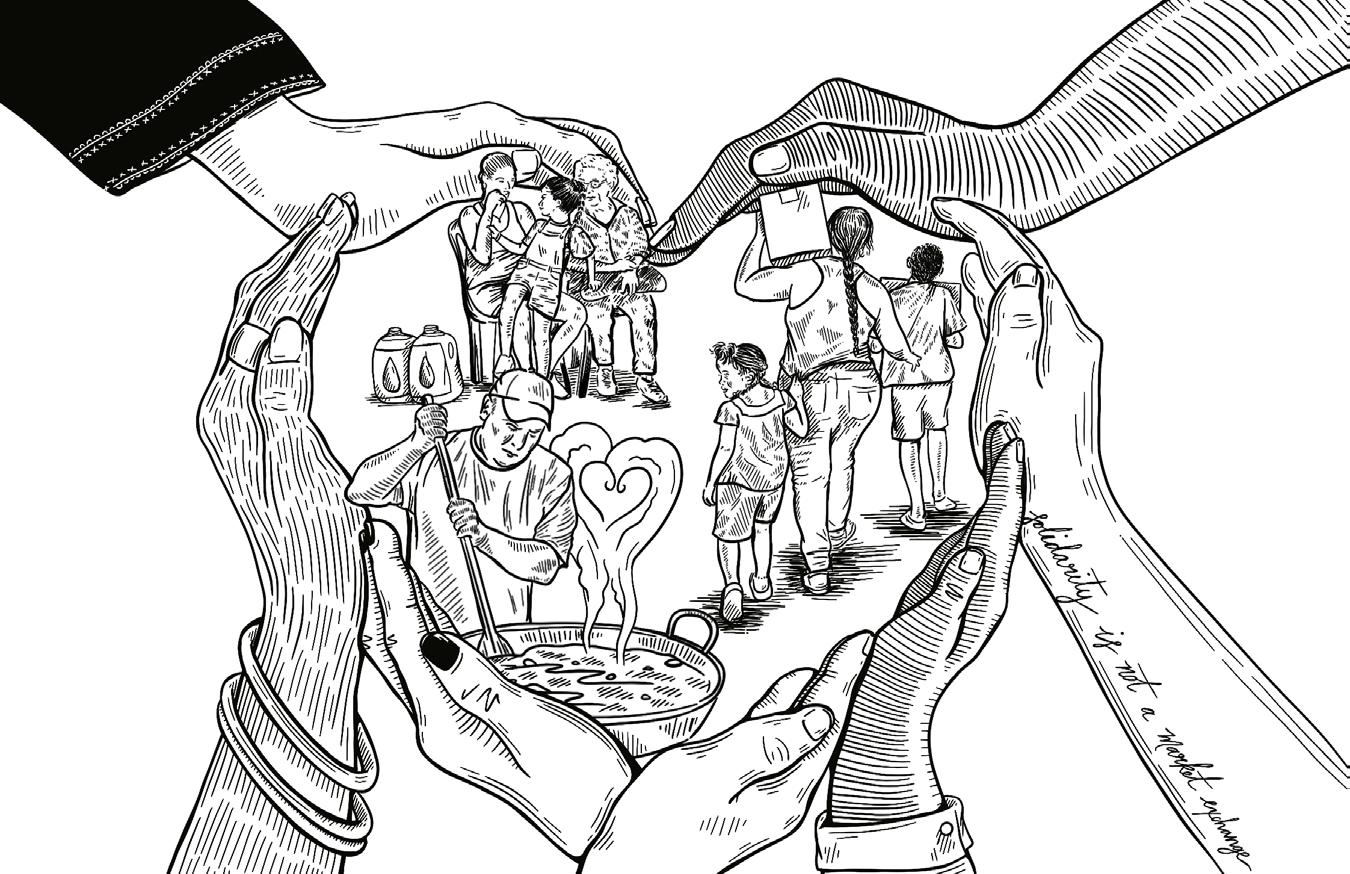 by Saiyare Refaei
by Saiyare Refaei
I have been home for three years now. Coming home from years of incarceration during the Trump era and during the first few months of the COVID19 pandemic, everything felt surreal, like the world around me was burning down. But this also felt very normal, and I believe it actually helped me to reintegrate into society outside of prison. I was already accustomed to having chaos and turmoil around me. Isolation was second nature, and having the extra alone time helped me to gain some grounding during this transition period of my life. But I didn’t know that my time behind bars also helped prepare me to help others, which in turn repaired a lot of the damage that being incarcerated had done to me (and continues to do to so many others).
I expected that the home I returned to after my incarceration would feel different from the one I left when I was arrested, but I didn’t expect home to feel so familiar to what I had experienced during my time inside. Everyone was angry and in a seemingly constant state of unrest with what was happening around them. It felt like the moments of murmuring and emotion before a riot, or before a fight. Obviously, in cities everywhere, this was exactly the case. People were upset and experiencing extraordinary harm. But this time, those who had the privilege to escape such things firsthand were increasingly aware of the fact that these injustices had been happening to a majority of communities across our country since its inception.
People in my hometown were organizing all around me. Everyone was heated, hurt, and tired, and yet ready for action. Most importantly, everyone was talking and sharing with each other. I knew in times of trouble or need within the prison system that we depended on our peers for help and support, but it was something I hadn’t experienced in quite the same way outside of that system. It felt like I had left a quiet and complacent world and come back to the exact opposite. Seeing abolitionist, antiracist mutual aid groups blossom around me was beyond inspiring. It not only gave me hope for the outside world, but it helped me to find a community that wasn’t afraid of my past and could help me put that past to its best possible use.
I was first plugged into a small group in Albuquerque, New Mexico whose focus was on creating change within the city budgeting system. Their goal was to decrease the bloated police budget here in ABQ and redirect those funds to programs that would help to meet the needs of the city to shift funding to priorities directly informed by the
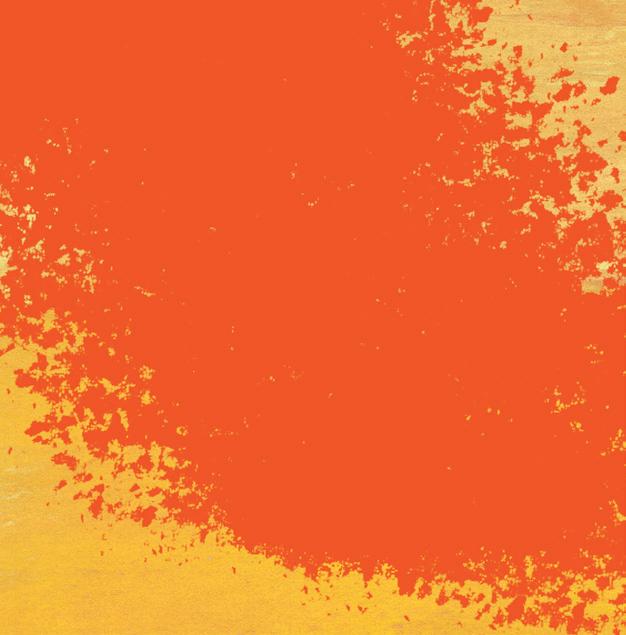
people of New Mexico and their needs. New Mexico has one of the highest rates for police killings in the country, but even without the statistics, New Mexico inhabitants can see the visual evidence all around us. Yet the police budget is increased year after year by liberal and conservative leaders alike. These funds are wasted: the people of New Mexico go with their basic needs unmet while the police get more and more money and police shooting counts continue to rise. This discrepancy what we are told keeps New Mexicans safe and what the actual facts are about public safety and crime rates was the main reason this group had formed.
I talked to one of the lead facilitators on the phone, and they asked me what had led me to want to take action and try to decrease the police budgets in our city. I knew that the police didn’t keep anyone safe and that the prison system never made anyone a better, more productive member of society. I knew firsthand that incarceration had not helped my issues with addiction and had not left anyone any safer. I also knew firsthand that I was not the only one who had or was currently serving time who felt that way.
I was so tired of accepting the fate I seemed condemned to, and I wanted to keep others from the same painful path. But I was still nervous. I felt too timid to speak up and far too insecure to be able to accomplish anything of value for anyone. I live with a lot of fear and guilt for my past actions, and I sheepishly asked the facilitator if they thought anyone in the group would feel unsafe having a felon in their midst. I felt comforted when they thought that I was joking; of course I was welcome and wouldn’t be the only person with a background. With a national incarceration rate so high, it is hard to believe that anyone who has experienced it can feel so alone. But many do, and such feelings keep us from connecting with others and using our common experience as a tool for collaboration, connection, and change.
I didn’t expect community organizing to be a joyful thing. The pursuit of happiness wasn’t what drew me into the world of organizing and abolition. It felt more like a duty. I wanted to help everyone I had left behind in prison and help others in my city avoid the prison system entirely. I wanted those with no direct connection to the criminal legal system or personal knowledge of what led people there to see the things they were blind to in their own neighborhoods. I didn’t begin organizing because I thought it would bring me satisfaction. But being able to see the changes within our community and how we have all pushed and persevered is one of the most joyful and inspiring things about organizing.
During my incarceration I often felt helpless, trapped between the brick walls that surrounded me. Organizing, which is hardly ever easy, can often feel the same, like nothing you do is good enough and no action has any measurable consequence. But, also like my experience of communal care during incarceration, communal care at home often relieved the loneliness and isolation of incarceration in the same ways it relieves the frustrations of organizing. Such moments of helplessness were fleeting they unfolded into new spaces and new opportunities that would let me use those past frustrating experiences and lessons for growth and innovation.
Being a more active collaborator in my community has also provided me with the space to express many of my formerly repressed emotions. I have cried a lot during my time working with community groups. I cry when attempts to make change fall short of our expectations, and I cry when they surpass them as well. The groups I have connected with are, on a base level, about this sort of openness. They are all trying to show our true needs and those of our neighbors to express those needs unabashedly, with the courage it takes to be vulnerable. The needs of our society have been hushed and hidden for too long, while the needy have been harmed and turned away by the city, state, and national officials promising to protect them.
Before I started organizing, I could barely speak without being so overcome with sadness, shame, and despair that I cried before I got my message across to others. This still happens sometimes I was set to speak in front of the New Mexico Capital Building about reducing funding to our state and city police forces. I started to speak, and I started to cry. I didn’t feel strong or like I had anything important or impassioned to share with the public. But as I stumbled through my short speech, overcome with emotion, I did feel purpose, one empowered by my tears.
I have been able to use my organizing not only to help and connect with others, but to also connect with myself to help myself to grow from the trauma that led me to organizing in the first place. I have been able to transform my thinking from lofty fantasies and desires for our world to creative solutions that are effective and achievable. While I still believe that abolition is possible and will happen at some point in the future of humankind, I don’t get hung up on waiting for it to happen today. I spend my time picking apart the stones that built the walls of our police state to begin with. I think it is far more important to try and stop the harm experienced today than to ignore the current pain of our friends and neighbors in an effort to achieve a lofty, if admirable, goal.
This is probably some of the best advice I can give: fight the big fight while still meeting the needs of those without the privilege to worry about the bigger problems. Do what you can and help others first. But give yourself the time and space to change and grow. If you do, others around you will be able to do the same, which will in turn transform your entire community into the safe and whole place that we dream of and fight for. All of the pain and harm in our society feels so normal to so many of us. But I want to live in a world where fewer and fewer people think that our current lives are normal and more and more people see this pain and harm as a distant memory, as the turning point where we decided that no one should have to go without or experience hate anymore.
I used to be regarded as unfit and unsafe for society, a threat to the status quo of the people who sent me to prison in the first place. Through organizing, I might still be seen as that threat to that status quo, but I finally feel like the productive and healthy member of society I have always hoped to be. More of us fit into the categories of oppression than we realize, and only through community connections forged by communication and collaboration can we create a world that is truly better and equal for all.
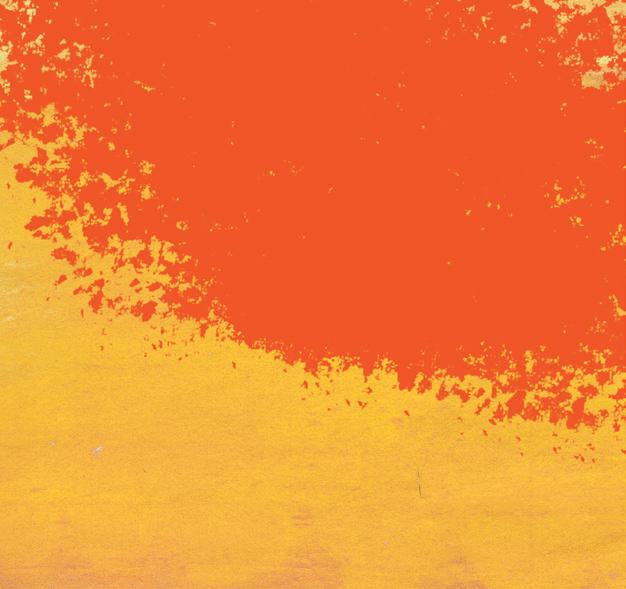
In November 2022, I joined thousands of teaching assistants, graduate student researchers, postdoctoral researchers, and other academic workers on the picket line after months of contract negotiations with our employer, the University of California. I had spent the previous six months preparing my department for this possibility. The first day was both energizing and exhausting. I helped people sign in, taught and led chants on the picket line, took photos and videos for our picket line social media accounts, and along the way, told our picket’s Kitchen Committee that I could help contribute some food for lunch on the picket line. And so, after my first eight hours on the picket line, I went home, sat down at my dining table, and made 100 cucumber hummus sandwiches.
Before I agreed to bring sandwiches, I considered what ingredients would be easiest and most cost effective to buy in bulk, anticipating that I would need to fund whatever food I decided to bring. It also occurred to me to post on Instagram and ask whether anyone would send me money for groceries to support the cause. I did not anticipate this outpouring of support from friends and loved ones, very few of them actually enrolled within the UC system. Within 24 hours of making a single Instagram story, I received over three times the amount of money that I needed. After years of making plans based solely on the resources that I knew I could count on, this was my first brush with the idea of abundance.
If I were to do it over again, I probably would not have offered to make 100 sandwiches after an unfamiliar, overwhelming day. I was dreading the experience, and I was ready to get it over with. As I chopped cucumbers and spread hummus, I started to experiment with my workflow. Was it faster to spread hummus on all of the slices of bread first, or to go one sandwich at a time? I watched the sandwiches stack up, and a formula began to emerge.
A standard loaf of sandwich bread has25 slices. The sandwiches from one loaf of bread make 12 and a half sandwiches if you save your leftover piece for the next loaf which uses about ten ounces of hummus (the standard sized hummus container at my local Target) and one average size cucumber, sliced into halfcentimeter pieces. This meant that sandwich planning could be perfectly planned in batches of 25: two
loaves of bread, two tenounce hummus containers, and two cucumbers. The experience of making sandwich after sandwich revealed these patterns to me, as if my local grocery stores had colluded to give me this satisfaction.
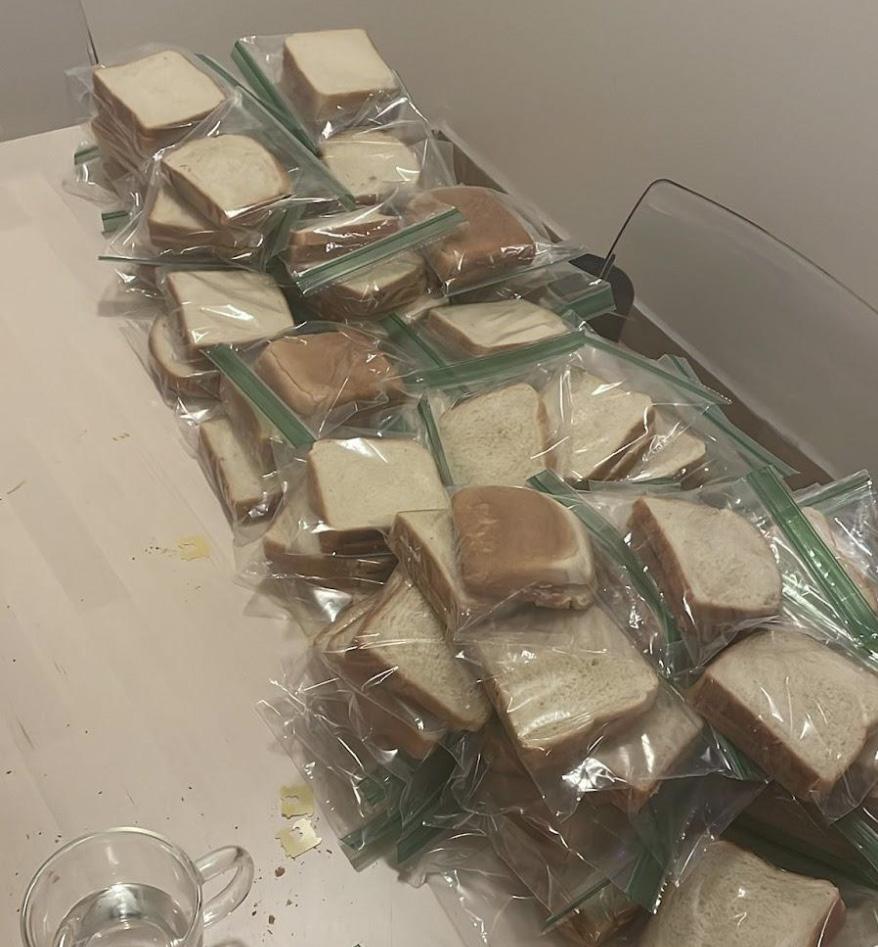
For the first two weeks of our strike, I primarily served as a chant leader and crowd marshal for the picket line. Though I never expected to be in this role, I took it on to make sure we had enough picket captains, since our picket lines had been modified to stay active for 12 hours straight. But it eventually became unsustainable and inaccessible.
Picketing was, perhaps ironically, much more physically demanding than the labor we were withholding from the university, and this publicfacing role brought constant anxiety for me. When I heard that the Kitchen Committee was looking for help with washing dishes, I saw my perfect exit strategy: people would stop handing me megaphones if I simply joined the Kitchen Committee.
I was warmly welcomed to their group chat as the new cochair of the Dishwashing SubCommittee. My subsequent days on the picket line had their own routine: arriving at the picket, I’d go upstairs to the graduate student offices, brew as many pots of coffee as I could, and help set up breakfast at the picket line. I spent the next few hours running coffee pots down to our Thermos and bringing the empty pots up to refill. Along the way, I might help people who were cooking the day’s lunch, running errands and locating supplies or ingredients, or keep my eye on the appliances plugged into our generator. At noon, we served lunch, setting out platters and bowls along with a handdrawn menu that listed the day’s dishes with punny names and colorful drawings of ingredients. Each day, we served a fourcourse meal with nonvegetarian, vegetarian, and vegan/glutenfree components in order to meet everyone’s dietary needs. I’d grab a plate, to quickly eat, either in solitude or with friends, and then spend the rest of the day washing dishes from the morning’s cooking.
I often washed dishes in desolate departmental lounges, abandoned by everyone who did not want to cross a picket line to get into the building. I now know where the sinks are in departments I had previously never visited. I know how to quickly soak and scrub a massive pot to get rice unstuck. I know how to angle a large sheet pan in a tiny sink to avoid splashing water everywhere. I quickly learned which faces at the front desks would glare at me as I walked back and forth with my dishes and when to turn around and find another sink upon hearing staff wondering aloud whether I was allowed to be there.
Over these weeks, I was coming to know information in ways I might not have been able to verbalize, but my body knew. This knowledge, stemming from this manual practice of patiently repeating something over and over again, is the transformation everpresent in organizing. The Kitchen Committee’s practices of reclaiming and repurposing offices and “community” lounges as makeshift kitchens exemplifies the creativity and imagination that organizing constantly asks of us. Though these university spaces were not built for meal preparation for hundreds, we used them as though they were. We made it so.
One morning, as I carried two fresh pots of coffee to the picket, I noticed various chalk drawings around the building. These drawings and messages were strike slogans, messages of solidarity, and prompts asking people why this strike was important to them. On one of the pillars by the entrance to the building, a message in large letters asked, what will you tell your kids when they ask you where you were during this strike?
The historic nature of our strike, the largest in American higher education history to date, often hit me in the beginning, as I attended rallies and worked as a picket line captain, where I heard speakers and leaders talk about the significance of this moment. I had not, however, considered the question in relation to my new role.
When future generations see the photos of our picket lines, will they wonder who cooked lunch? Will they wonder who stayed up late for hours prepping ingredients in their home kitchens? Will they wonder who went grocery shopping or who did the dishes? Will they wonder how it came together? Will they take it as an inexplicable miracle? Will they even think to ask? With every attempt we made to focus on the joy in sharing meals and the care we took to create a space where we could feed our community, our labor and our time behind the scenes also had the potential to become invisible.
Now, months after our strike ended with the ratification of our new contract, the Kitchen Committee has continued to host monthly communal lunches, meals for 80100 people. We’ve also begun stocking campus fridges every two weeks with prepared meals for anyone who requests one, and we deliver meals to folks living in nearby neighborhoods.
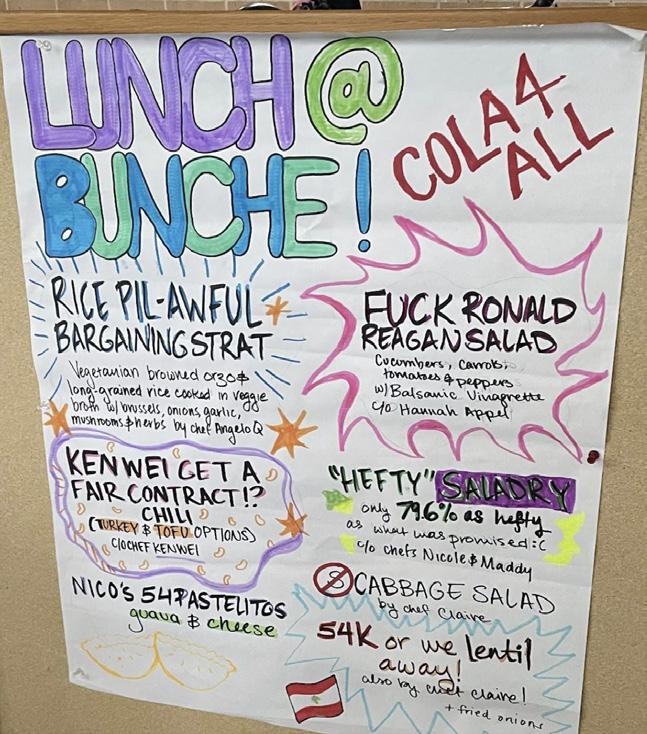
The nature of our labor and planning has changed since the end of the strike. Managing the transportation and cleanup of supplies is more complex, since meals are coming from our homes, rather than the convenient central space of reclaimed graduate offices. New elements like delivery and fridge stocking have added complexity to cooking and planning.
We feed us because we can because we want to but also because we still see the need to do so. Getting a new contract with updated working conditions did not wipe out graduate student food insecurity or rent burden. At the same time, the labor associated with this work is daunting. For this new poststrike extension of our work, there are sometimes only five to seven people working behind the scenes to prepare a week’s meals. I am shocked at how much we have been able to accomplish, and I am nervous about the wellbeing of our future selves as we work outside of the swell of community and resources provided by the strike.
Our next challenge is finding sustainable ways to support the Kitchen Committee for as long as we feel willing and able to do this work. After long nights and days of seeing the people around me give so much of themselves to this project during the strike, ignoring personal and academic obligations in order to do so, I know we need to set manageable goals, so we do not stretch ourselves trying to create something bigger than what we can handle.
At the same time, I cannot help my nagging optimism: I believe there are people who are waiting and ready to help in ways that we have not yet been able to imagine. I am personally excited about our ongoing documentation project, where we are creating a Kitchen Committee wiki describing our history, values, and practices. In our records, we maintain our own archives of our pictures of recipes in progress, our videos of cooking fiascos, our grocery lists, our budgets, and our todo lists. I am curious to see the outcome when we try to verbalize our experiential and bodily knowledge about menu development, time management, budget calculation, grocery shopping, food preparation, past and future recipes, and so on. I hope this document will become a training resource that easily allows people to join us in this work, open our eyes up to ways that we can ask for help, and make our labor and time more visible for the sake of historical memory. Though the strike is over, we are so lucky that Kitchen has thrived and that we have the time to continue imagining new possibilities, feeding ourselves, and sharing meals together. Everything for everyone!
I find it a sweet coincidence that on the deadline of this essay, my partner’s and my abolition group is discussing Chapter 4 of Joyful Militancy called “Stifling Air, Burnout, Political Performance.” Anyway, thank you for the opportunity to reflect on our organizing experiences; this essay was an opportunity to heal and take a breath to look at all the work we’ve done, and crack a little smile.
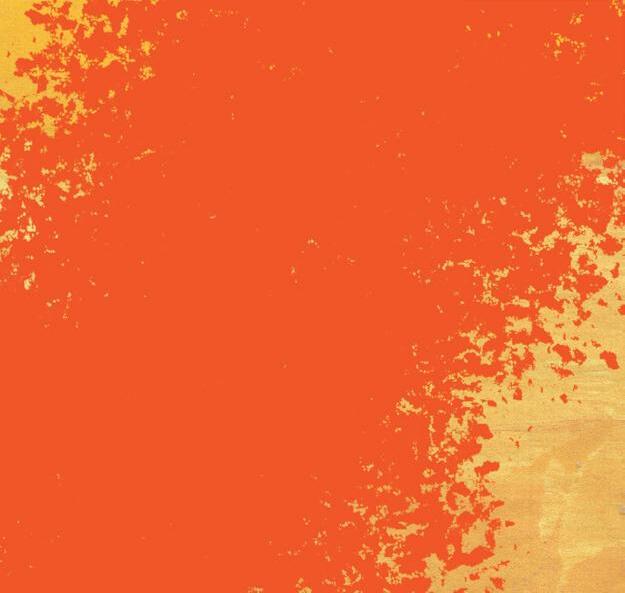
I’m Sprout, and I live on occupied Dakota lands, also called Minneapolis. I am a queer, nonbinary, white, mexican communist, and I have been trying to find and make community here for a few years. I want to help shape a liberated future for us all by getting into the mess of building caring relationships in the present, especially as we are being pulled toward an ableist, fascistic normalcy. I want to resist that every day.
My name is Plum, and I am a white woman from Kansas City, currently living in Minneapolis. I have both anarchist and communist tendencies, and while I’m still figuring that out, I have been mostly impacted by the
This tale is being told by two dykes, first partners then coorganizers. Coming at you from the city on fire, Minneapolis. We met during 2020, when mutual aid was thriving and people had jumped kneedeep into relationships built on barricades and behind distro tables. While this isn’t a love story, I must say we fell deeply in love and still are. Sprout was organizing with more communist circles, and I found myself with the younger folks who had more anarchist tendencies. We built relationships quickly and deeply. But we learned with time that intensity doesn’t equate intimacy, and as time went on, groups started to fall apart from the inside out. Unchecked dynamics and those little and big things that were never addressed, because of ongoing rapid mobilization, began to show themselves during the lulls. The beauty of the uprising, a spontaneous rebellion of poor and working class multiracial people, met its limits when our groups weren’t prepared for the power dynamics at play between us. Our ideas of comradeship were quickly challenged when we realized we had different ideas of consent and boundaries. While I’d love to say we only disagreed about tactics, I believe we also disagreed about the strategy and the place we were working toward.
Before Sprout and I share our mistakes, we want to say that, first and foremost, we continue to live in a pandemic that has killed and continues to kill unimaginable amounts of people. We need to be educating each other and challenging the
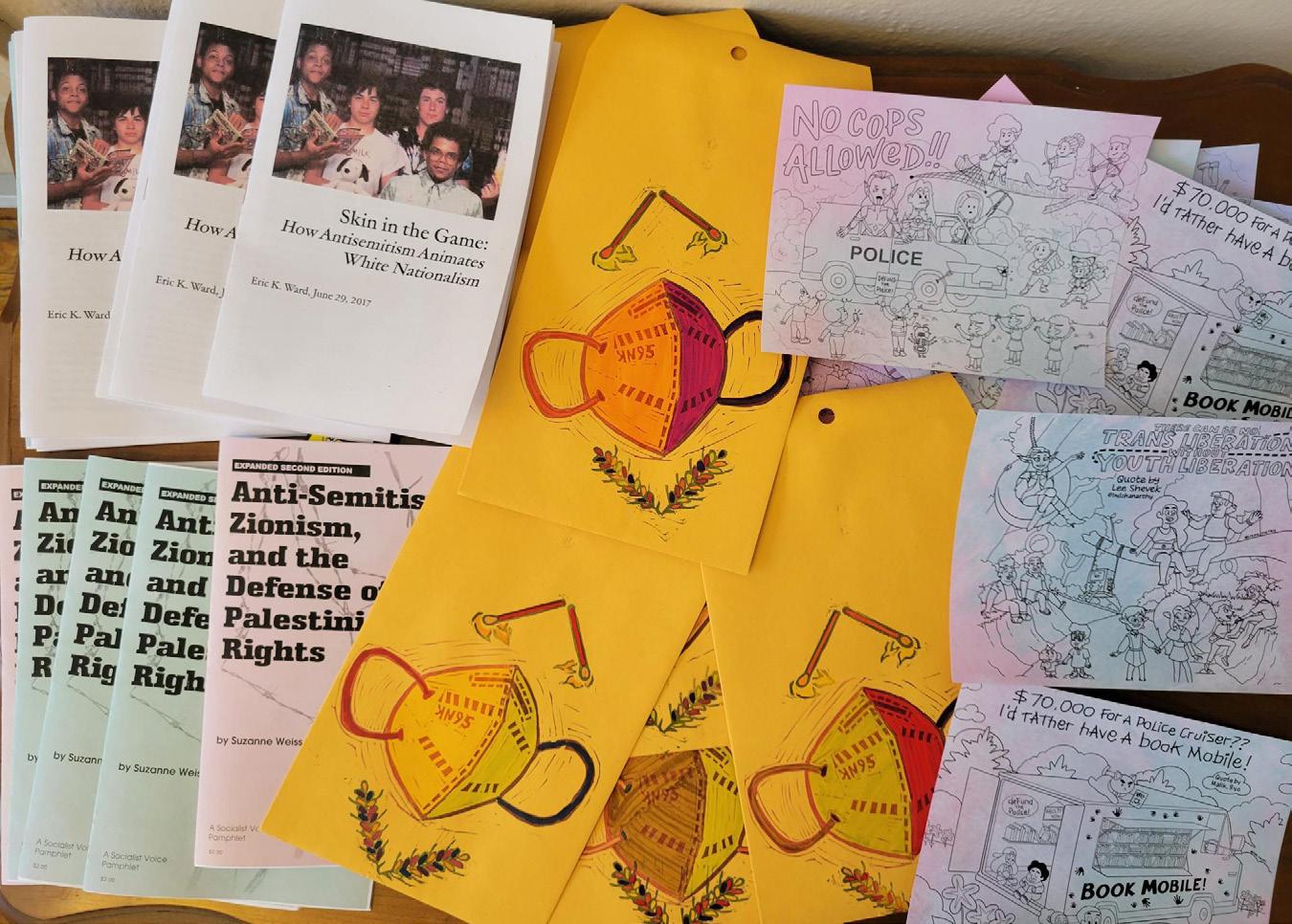
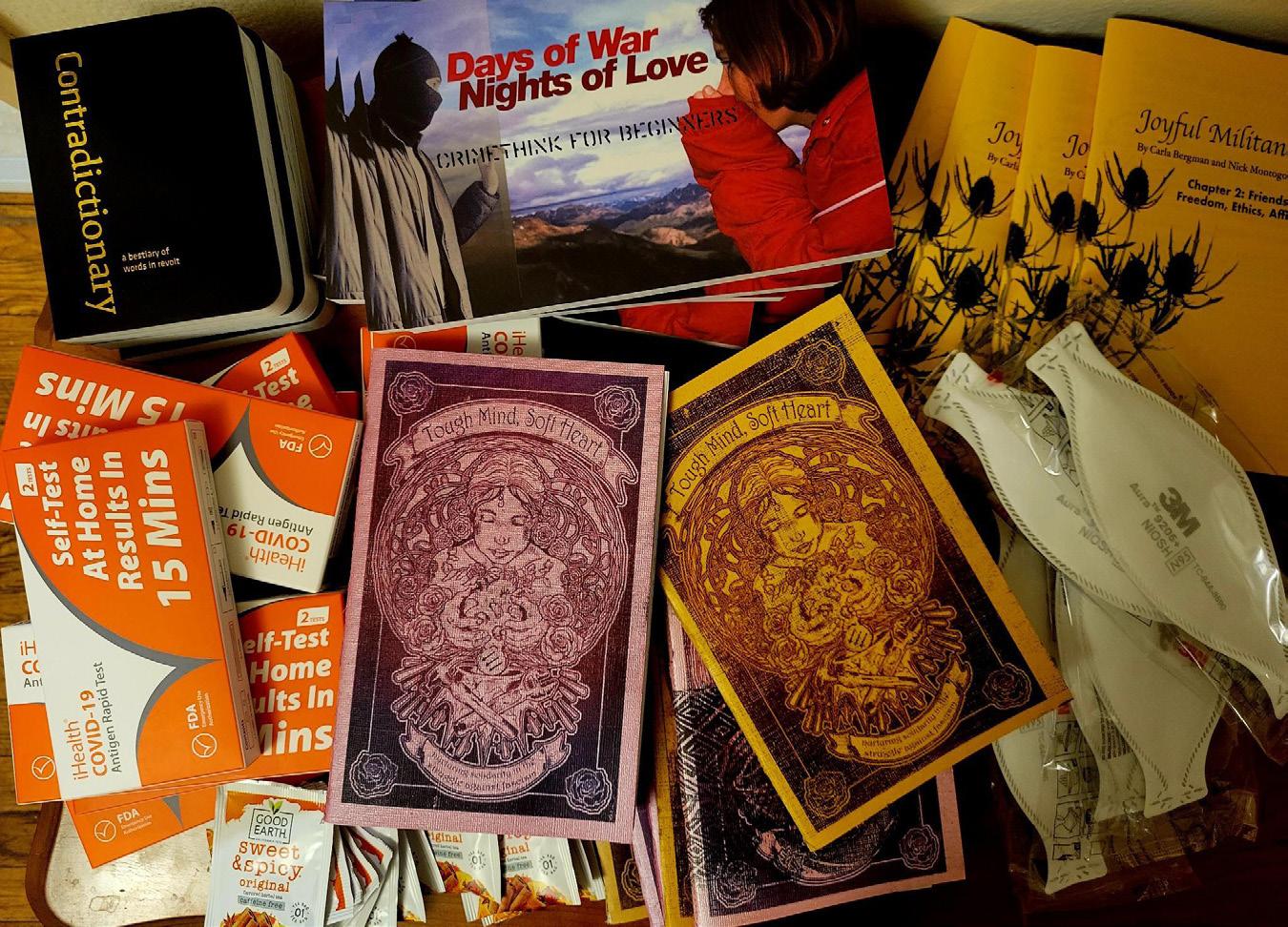
individualism that has led many radicals, especially queer folks, into abandoning their ethics. We are in a time where the most robust and lifesaving organizing that is happening is invisibilized, and it’s happening in QTBIPOC disabled communities. We need to challenge what we consider organizing, and who does it, and what it looks like.
While there are many lessons to be learned from Minneapolis and the uprisings, Sprout and I are going to focus on what we learned as people who continue to organize in the changing terrain (because, oh, will it change!). First and foremost, you are going to make mistakes. Be confident in the projects you want to build and the dreams you want to bring forth, but be humble when they change course unexpectedly and when mistakes get made. It’s really not about getting it right; it’s about everything you learn as you go. Many people decide not to show up whether that’s to an event, for their community, or as an organizer because they are afraid of getting it wrong. You will get it “wrong” many times. We have seen many organizers dig their heels in the ground when their ableism, misogyny, chauvinism, etc. is brought up to them. These are always opportunities to reflect. Even though you’ll likely receive criticism from people you don’t like, we owe it to ourselves to reflect on all the feedback we receive, whether or not we agree with it, even if we dislike the person it came from, and yes, even if the intention of the criticism feels malicious.
After the initial rebellions in Minneapolis started to die down, many people in our group weren’t sure how to show up well in these lulls. This was actually a really illuminating moment for us because it gave us time to strengthen our relationships (by spending time with one another for enjoyment and not for a meeting or with an agenda etc.), to read and discuss political literature (like reading a zine together, sharing thoughts, and realizing where you disagree and why), and lastly, to have the time to organize with more intention. Often, when things are “popping off,” it doesn’t feel like there’s time to organize well when things are unfolding so quickly. And if it’s urgent and rushed, you likely are leaving disabled folks out. Sprout and I were excited about the slower times so we could read together, gather and discuss texts, and start to get to know each other and how we envisioned building this new world. This gave us an opportunity to hear perspectives that didn’t have space to surface before. It gave us time to actually think, reflect, and change our minds! We started a group called Abolition is a Practice in April 2021, which is currently ongoing. We meet the second and last Friday of every month and decide together a text to discuss. We have a cryptpad (a more secure version of a Google doc) for people to write down topics, zines, books, and/or podcast episodes they want to talk about, and we create a poll once a month for people to vote on the suggestions. The first and second choices become the two topics for the month. We come up with some discussion questions, have people volunteer to record the resources for people in the chat that need or want that, and finally, if we are able to print the resources or make them into a zine, we offer zine deliveries. We have been delivering zines for over a year now, and it has become a beautiful vehicle for making sure people have masks, coloring sheets, mental health resources, and most importantly, candy, snacks, and sometimes even
stuffed toys! We have boundaries placed on making sure that any event that is shared has mask requirements. We work together on what people need to feel and be safer in that space.
I’m sure if you’re reading this you’re familiar with the concept of “burn out.” I also like to refer to this as attrition. Sometimes burn out can sound like it’s the individual’s fault for being exhausted. The reality is that we are living in an environment that feels like it’s getting worse, not better. This is a war of attrition. The stakes are high with where we put our time and energy. For me, one of the best ways to avoid total exhaustion is organizing with people I respect and who reciprocate that respect back.
So many organizing spaces we have been in have been dominated by people who don’t want to address their chauvinistic behavior, both male and white chauvinism. What this can feel like, when you are part of a marginalized gender group and/ or when you are racialized, is constant condescension along with the underlying assumption that you need to do forms of labor that the cis white men aren’t taking on (especially emotional labor, care taking, conflict resolution, notetaking, setting up, taking down, etc.). Limit your organizing time with people that deplete you. This doesn’t always mean that organizing is going to feel amazing, and not everyone you don’t get along with is to be avoided, but make sure you have spaces that nourish you and where your organizing feels joyful. Yes, it’s allowed to feel good! No need to martyr yourself for a zine table, food distro, or an event. Our time and energy matters. If you meet people that don’t make you feel that way, that is probably not a space where you should put a lot of your energy! That goes both ways. If people take the time to help, no matter how big or small, show gratitude. There is a deeply entrenched, misogynistic idea that we don’t need to be thanked for our work. We strongly disagree with that. Now, maybe not everyone you meet needs to say thank you, but if you feel like you’re not allowed to ask for gratitude from the people you organize with closely, it’s likely a toxic environment. We highly recommend reading Joyful Militancy; their concept of rigid radicalism really says it better than we ever could. One thing I have struggled immensely with is pace and the need to be consistent. While Abolition is a Practice has maintained consistency like a drum beat, sometimes that beat needs to change.
Risks. While we are in a time (and have been) where fascism is on the rise, we have learned some lessons about the consequences of jumping into risky situations too quickly. First of all, you don’t have to! Guilt can be a sign that there’s an area of yourself that you want to challenge, but it’s not a sustainable motivator, and it can easily land you in prison when combined with peer pressure. Now, if you want to take a risk, I suggest taking a moment and assessing the terrain. What kinds of risks are useful? What kinds have been proven easier to repress over the past three years? If you haven’t thought about this, I would consider reading “After the Crest,” parts 1 and 2. Will you have support from your friends and the public if you are arrested? Why does this matter? Public support and friend support can be factors in how
long you spend time inside (surely not the only ones though) . Your cause may feel righteous and clear to yourself, but are other people able to understand it? Does it relate to anyone outside of the small group or subculture you’re a part of? This is a larger part of organizing: making sure we are talking to people and understanding why what we are doing matters to them too. This, in my opinion, is where our groups have failed a lot of the time. No, this isn’t a popularity contest, and no, we don’t want to water down our message or try to get support from people who will never support us. However, if you notice that there are people whose experiences would most likely form solidarity with us, but they feel alienated or disconnected, this would be a good moment to reflect on the values and strategies as a whole. Anarchists can be really existential and abstract. Create a rubric for any action, event, or risk you participate in. Some questions you could ask are: “Is this relatable to the people we are standing in solidarity with?”; “Is it clear why we are attacking this specific thing/place/group?”; “What does a successful action look like to me/this group?” or “Is this risk materially benefitting anyone?” (This is one that is of personal importance to me because in the current ecomonic state, people are really fucking struggling.)
Changing terrain. What I have had to challenge in the past three years within myself is how I define militancy. What I have observed in the past three years of organizing with a lot of white anarchists is adventurism and reactivity being defined as militancy. When I think about militancy, I think about the need to remain flexible and attentive to the changing conditions. Many things that were possible in the summer of 2020 were not possible two years later; the heightened antagonism and large groups of people active at that time made it feel like taking more risk was possible. Understand the waves and seasons of organizing and what makes you or your group easier to pick out and repress. Take getting arrested seriously, and try to avoid it at all costs. Don’t assume it makes you a badass because you are willing to get arrested. Many folks from the global majority have a different history and understanding of the risk of getting trapped by the state. We live in a world of nonconsent and daily risk, which means how we move with each other needs to be more intentional. If a friend or comrade does something that puts you at risk, without touching base with you first, move with caution. Rarely can we control what happens in large groups or protests, nor do we want to, but what happens with our friends, comrades and coorganizers deserves attention. It is possible to fight and take care of each other at the same time.
Grief. I am a death doula, and the amount of unprocessed grief I see in our communities is a little daunting. I think this term can be a little intimidating, but what I have personally learned in my own grief practice is an understanding that the more I give space for my anger, sadness, and hopelessness to come up, the more I learn to be patient and kind to those we are in relationship with. A piece called “Mutual Aid, Trauma, and Resiliency” by The Jane Addams Collective considers the common effects that trauma can have on communities and how, when we avoid our grief and emotions, we can turn on ourselves and each other. What could a grief practice look like, and why is it important?
First, it’s important because we deserve to feel the full range of our emotions. The pain we feel when we can’t do as much as we want, when we lose friends, when the world we want to live in feels farther away everyday starts to accumulate in our bodies. There is also this idea that grief in action and revolt is the only way. Honestly, I hate when people think grief needs to be immediately directed into action. I think it comes from a deep fear of actually just allowing ourselves to be still. It can, of course, be one of many ways to process our grief, and it also is a response that the state is prepared for. When we reactively move in the world, we are more likely to fall into the timetested traps that the state has set. I’m not saying that there isn’t a place for emotions in action, but if they are the only fuel we have, it can often get in the way of having important conversations such as risk assessment, strategizing tactics, and overall preparedness. Don’t be afraid to just hang out and feel really fucking sad by yourself or with others. Taking a moment to allow yourself time to process can mean, when you do decide to do something again, you do it more intentionally and fully.
I am a commitment to being a vulnerable and centered organizer.
This is my organizing mantra. I repeat it whenever I need to reground myself on why I do this work. I repeat it when I am struggling or when I feel lost and need to center myself on my commitments. I am grateful to BOLD for guiding me in developing it.
Organizing feels like my birthright. It’s the only inheritance I care about in this life. It’s the only one I think I’m going to get, and I’m okay with that.
Vanny V (any pronouns) is an Afro Latinx cultural worker, social poet, and community organizer born and raised in Miami Dade and a daughter of Dominican immigrants. They are currently working with the Miami Workers Center as a Housing Justice Organizer. Using a Black queer feminist lens, Vanny is experimenting with base building and leadership development of impacted Black and Brown
Ever since I was a jit, I knew that I wanted to make change happen. When I blew out my candles on my eighth birthday, I closed my eyes and wished that Martin Luther King, Jr. would come back to life so that we could fight for justice together. I can still clearly remember my heartbroken sobs as I opened my eyes and Mami explained to me that he would not be coming back. As I read about him and his assassination, and the victory of desegregation and The Montgomery Bus Boycott, I knew that I wanted to continue where he left off. I wanted to be involved in a changemaking process, in a revolutionary process.
What I wasn’t prepared for when I was eight years old was that I would be entering into a war a war that has been going on for centuries and centuries. It’s a war for our dignity and for our right to safety and freedom. In this war, we are under constant, relentless attack, and victories are hard to come by.
Fortunately, my people have cultivated a thorough and methodical theory of change, built on traditions of resistance and survival and revolutionary movement building. These are strategies we learned from the Black radical tradition, the fight for Indigenous sovereignty, and from all of the history of class struggle. These are

our legacies, our inheritances. And as a descendant of Black and Brown folks, who resisted and fought and survived in the island that saw the victory of the first Black republic of formerly enslaved people, I see it as my duty to honor and continue that tradition through my work.
I got into activism right around the start of the covid pandemic in the beginning of 2020. I helped organize rallies and marches, supporting activist run local campaigns against the prison industrial complex and for bail funds.
I began to experiment with base building and community organizing around the end of 2020 into the beginning of 2021. That’s when I started tenant organizing.
Every day as a tenant organizer in Miami, Florida, I try to live up to that revolutionary legacy. My ancestors accompany me every day through every phone call, every oneonone meeting, and up to every door that I knock. They are the inspiration for my commitment to cultivating a bigger we, for building a powerful and coordinated Black left, for building a militant and organized working class. When I read about the spiritual rituals that were a part of the Haitian revolution and the mystica practices of MST in Brazil, I know that surrealism and spirituality are as important to my organizing as a grounded material analysis. Both are necessary to connect with our cultures and what our people care about.
I recently had the privilege of being an organizer in the yearandahalf long campaign that won the Miami Tenant Bill of Rights and inspired other Tenant Bills of Rights in Florida. At the height of the Covid pandemic, we knocked on doors, spoke with tenants facing the violence of eviction, brought tenants into our organization, The Miami Workers Center, and identified key issues facing renters in Miami. Based on those conversations and what came up in our organizing meetings and workshops, we developed campaign demands that became the points in our legislative package.
During the campaign, I provided support to dozens of renters in withholding their rent. I helped Black tenants in Liberty City organize to fire their white racist property manager. I organized with tenants so they could negotiate and demand relocation assistance when their landlord tried to illegally displace them from their homes. I worked beside people who had made the hard choice to stand for the dignity of themselves, their families, and their neighbors with no guarantee of success. I looked into their eyes and had to tell them that I could not promise them safety. All that I could offer was solidarity and my own commitment to struggle and to fight together.
I’ve cried many tears. I have seen leaders displaced and retaliated against. The choice to transform myself and commit to transforming my community has been one of the most deeply painful yet liberating experiences of my life.
Every day that I do this work, I am looking into a mirror and seeing all the ways that I can grow. I am seeing the ways that I can ask more questions, the ways that I can listen before speaking and assuming I have all the answers. The ways that I can respect the intimacies and vulnerabilities that are shared with me. The ways in which I can support the agency and selfdetermination of another as they step into their leadership.
In this work, we have no choice but to change and shift. If you refuse to change, you are going to lose. You have to look at yourself and look at the ways your ego affects you and your relationships. You have to assess the ways that it affects your organizing and your own leadership. If you can’t do that, you’re going to fail. If you can’t stomach going through the process of self critique, then organizing isn’t the job for you. And you have to be willing to give others that feedback as well. If we aren’t accompanying the base through training and leadership development, we aren’t organizers. If we are making all the decisions and performing all the labor, we aren’t organizers. We need to trust our folks to learn the tools and techniques of recruitment, facilitation, and campaign building and in turn, learn to teach these skills to their family and neighbors. And they need to learn when they are showing up in ways that are hurtful to others and our movements. Practice and feedback is essential in these developmental training sessions so that we can build a militant mass movement. A very big and constant lesson for me has been that a commitment to growth and change of ourselves, our base, and our communities is key to being an organizer.
Our relationships and our connections create the potential for power and for liberation. And at the same time, we have to understand that when you build intimate bonds, you open yourself up to hurt and heartbreak when the risks that we take as organizers don’t pan out.
Connection, vulnerability, and shared intimacy allow us to build bridges towards our collective freedom. Our ability to expand into our width, into our connections, is truly where our revolutionary potential lies. It’s where community thrives, where our comrades and neighbors and families are, that we find the space to grieve, to process, to experience joy and love, and the strength to continue to fight. Without each other, we are lost.
In church services and family birthday parties, getting together with neighbors to have drinks this is where the organizing happens. Where we can connect over shared dreams and struggles, and invite a family member or friend to the next community organizing meeting. The ruling class understands that and has fashioned borders and boundaries and superstructures in order to separate and alienate us from one another. They try to get us to see each other as enemies instead of comrades. And our people, out of a reasonable and intelligent instinct for survival, adapt to the idea that if they just mind their business and follow the rules, they can get by and survive. They adapt to the idea that they should be happy with that and not ask for more.
I’ve learned that I can’t judge our people for these tactics. We can’t successfully organize anyone through judgment and shame. As an organizer, my job is to support my people in resisting those instincts, to instead feel that revolution is irresistible, that there is no dignified way that we can actually live without it.
What I’ve learned is that one of my jobs as an organizer is to help the base analyze our material reality dialectically so that they can see that between the working class and these historically oppressive systems there exists a level of consent. We, as the largest class formation in the world, have the power to flip the system on its head. But first, we have to sit with the reality that things exist as they do because we consent and let them be so. My job is to ask my people with firmness and compassion agitational questions, so we can contend with whether this is something that we really want to allow. Because if we believe that this way of living is unjust and cruel, and that we deserve to live in safe homes and have decent paying jobs and well funded schools and communities if we believe all of that we have to take a risk for change.
I need to agitate people into choosing to withhold their rent. I need to agitate folks to organize a petition with their neighbors, to risk getting evicted and losing their homes. And I can offer no guarantees and no promises except for the promise of solidarity and organized struggle. As Amilcar Cabral said so beautifully, I try to “tell no lies.”
I don’t think I hear enough about the realities of how fucking scary it is to seriously do that, to push people into taking that risk, the risk of leadership. That has been the hardest part of the work for me, supporting others as they take that risk and then dealing with the potential losses and the feelings of guilt. Yet nothing beats when the risks give way to material shifts, to transformative wins.
Organizing infrastructure in the state of Florida is painfully weak, but I am very grateful for my somatics coach Oscar Trujillo for helping me process and heal through somatics and BOLD (Black Organizing for Leadership and Dignity), a leadership development course that has taught me tools to support me in processing the trauma of our society and the way it shows up in my body and in my organizing and how to choose to move from my organizing mantra and commitments instead. I honestly suggest every Black organizer and everyone organizing to support Black liberation participate in BOLD. We all need to practice the emotional management skills desperately needed for us to survive this war we are waging. I truly believe our inclination to avoid that work is one of several reasons why we are losing.
In this work, we can’t neglect our own healing. I think a dedicated movement practice is essential. Nothing helps me move the trauma and pain from my body like dancing or yoga. I’ve learned the hard way that without some consistent movement, negative energy
will fester and can sabotage my work. As organizers, we cannot dive deep into supporting others without diving deep into the work of supporting ourselves. It is the work.
And yet, even with all the pain and the losses and the sadness, there is truly nothing more exhilarating, more satisfying, more thrilling, then when a tenant or a worker decides that they are not putting up with this shit anymore, and says “Fuck you,” to their boss and “Fuck you,” to their landlord. To be a part of that process, to have their backs, to hold their hands, to bear their tears, to support them in the strategy and execution of their tactics, to celebrate together there is nothing in this world like it. There is no roller coaster, no drug that could beat it. It is such a beautifully natural high. It’s really the fuel that keeps me going. Finding joy in the process, in the intimacies, in the little wins, relishing those is essential to my resiliency.
The connections I have made with comrades and with tenants, who have trusted in me and mentored me, are so precious and crucial to my ability to sustain myself and my commitment.
It’s also important to have a disciplined ethic of rest. I learned the hard way that you can’t just survive off of solidarity and rigor. I’ve definitely made the mistake of being so excited by a campaign or by a building fight that I exhaust myself. That can be a big mistake. You need to rest and take care of yourself, or you won’t be useful to the movement. You will get irritable and burn out. My organizer taught me that choosing to die for the revolution is easy; the hard part is choosing to take care of yourself every day and live for it.
I continue to struggle and experiment and fumble and make mistakes. The lessons are constant, and I learn and relearn everyday. I know that my ancestors are smiling and are proud of me and the work that I am committed to doing. In Florida, the monopoly class really has a chokehold on our political system. The Florida Legislature is attempting to roll back what we won in the Tenant Bill of Rights as we speak. But if I don’t continue to fight, then I am consenting to our oppression. The pain is inevitable. So we can choose not to fight, and hurt, without resistance. Or we can choose to fight back and experience the pain of transformation. My choice is to organize with my people and fight back.
My journey with advocacy started in the Spring of 2022, right after a long, hard winter of headaches, panic attacks, and nightmares. But it never used to be that way. I was happy until my world turned upside down one day.
It’s important that I introduce Madisyn to you; she’s the reason I’m even writing any of this.
Madisyn Baldwin was a pretty, quiet, artsy girl I met on the first day of our senior year of high school. We were both going through it when it came to friend problems and mental health struggles. We had so much in common, it would be impossible not to be friends. She was a breath of fresh air.
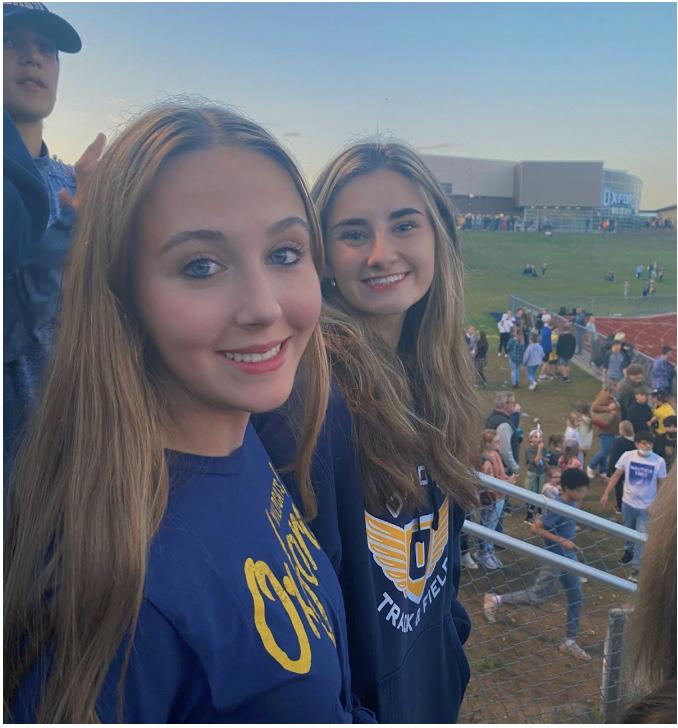
About the Author
A sunny day in the middle of the summer. A field of sunflowers growing in the most unexpected place. She taught me how to live in the moment, and love every moment. She taught me to dance in the rain rather than take out an umbrella. She saw the beauty in everyone and everything. We spent almost every minute of every day together. She was even by my side that day, right before it all unfolded.
We were walking and talking like any friends would when we heard gunshots. I thought it couldn’t be real, but not everyone shared my disbelief. People started to run, scream, and push.
It’s odd how panic brings out the worst in people. When eyes go blank, and legs go into autopilot, and people you’ve always known shove you out of the way in order to escape, that’s when you know it’s real. Madisyn and I got separated, but I had it in my head that she was safe, even though she was missing. A few hours later, I saw her face on the news, along with the faces of Tate Myre, 16, Hana St. Juliana, 14, and Justin Shilling, 17. Madisyn was also 17, and at the time so was I.
It was deemed a mass shooting. The deadliest school shooting since 2018.
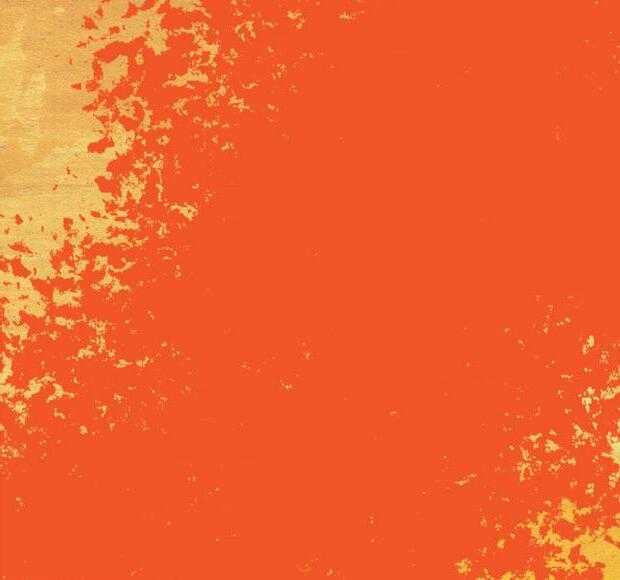 Madeline Johnson (she/her) is a gun violence prevention advocate
Madisyn Baldwin (right) and I (left) at our homecoming game in the fall of 2021
Madeline Johnson (she/her) is a gun violence prevention advocate
Madisyn Baldwin (right) and I (left) at our homecoming game in the fall of 2021
It happened at my high school. The place where I spent seven hours a day learning. The place where I learned the greatest lessons, and experienced the greatest relationships. The place that was going to prepare me for the rest of my life. Instead, it prepared me for a life of obsessively looking for exits in every building I walk into. A life of constant fear and paranoia. A life of flashbacks, nightmares, and grief that never seems to hurt any less. That’s why I hated the idea of advocacy at first; I couldn’t bring her back, so what was the point?
The anger inside me piled up and the pile grew larger each time I saw more faces on the news. Gunned down inside malls, grocery stores, and even schools like mine. Faces that were captured in one moment, forever representative of an entire lifetime that was cut short by a bullet. It made me angry that other people had to feel what I felt.
So, when I opened an unexpected text message from a schoolmate of mine, a student a grade below me, I didn’t hate the idea of making change any more.
The message came from Dylan, a hard-working organizer who’d already had experience working on political campaigns and leading youth Democratic organizations. He was just as angry as I was, and he wanted to do something about it. Soon, we found others who shared our anger — other students who had lost loved ones. We had a few meetings, and before we could even process it, No Future Without Today was born, along with my journey as a gun violence prevention advocate. I was appointed co-vice president as well as press director of the team.
If you’re reading this, maybe you’re hesitant to start your own journey. Maybe you already have, and maybe you have much more experience than I do. No matter who you are or how much you know about organization, I’m a firm believer that the most valuable lessons this world can offer do not come from a textbook; they come from experiences. This includes other people’s experiences.
So, throughout this reflection, I’m going to tell you five things I’ve learned so far in my year-or-so of advocacy work.
One of the first things we did was organize a rally in our town, Oxford, Michigan, in coordination with March For Our Lives, during the summer after the shooting. When
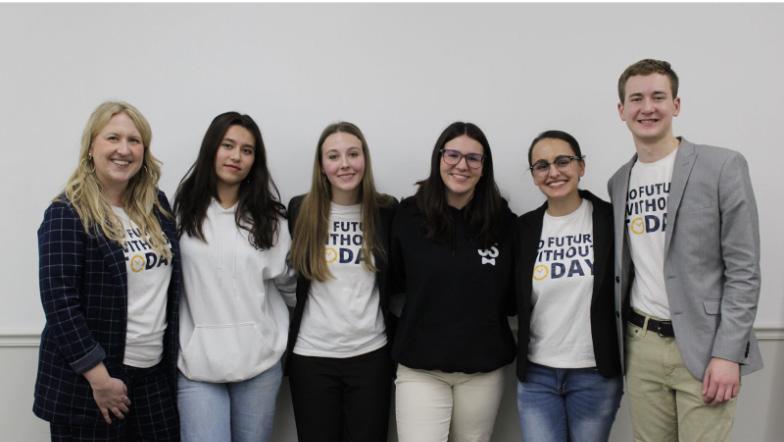
I was given the opportunity to speak, my immediate reaction was to decline the offer. Before the shooting, public speaking could probably be considered my biggest fear. I don’t know exactly what I was so afraid of, but the thought of giving a presentation, or even answering a simple question, made me nauseous.
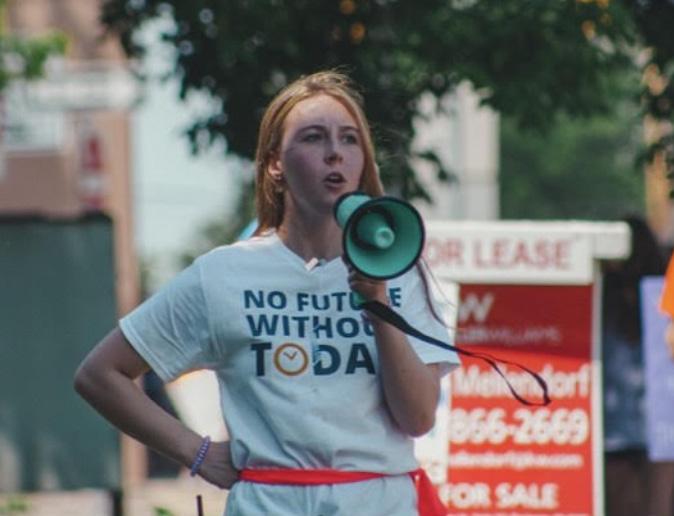
I’m still not so sure why I ended up typing up a speech, and why I ended up actually giving it. It was so out of character for me, but it made me realize that perhaps I’d changed. Miraculously, it wasn’t so difficult to stand under that gazebo in the middle of our once-so-normal town, and share my anger with people who held signs and cheered me on. I remember walking up to the microphone, my entire body shaking, when I saw a young boy sitting in the grass in front of me. He couldn’t have been much older than twelve, and he held a small poster board with red writing.
It shattered my heart into a million pieces all over again, but it also shocked the fear out of me — the fear of speaking, at least. I love it when people talk about how the “little things” are what impact us most. I think this can be interpreted in many different ways, but it has always been true for me.
That day I realized that not only was I good at speaking, not only did I enjoy it, not only did it replenish the energy I’d been lacking, but I also realized that there are much worse things in the world to be afraid of. Or perhaps I’d realized that on November 30, 2021, when I ran from bullets. But I also learned the first of the five big things I am now passing onto you, my reader.
I decided that day that I liked the feeling. It was one of the only things, and still is one of the only things, that makes me feel whole again. When I’m doing any sort of advocacy, whether it’s a weekly board meeting with my team, or a big rally, I feel like I’m avenging Madisyn. If I can’t have her back, it’s the next best thing.
A month or so after my speech, I received an opportunity from a local March For Our Lives leader to go to Washington, DC to attend the presidential signing of the Bipartisan Safer Communities Act, which was considered to be a groundbreaking package of federal legislation regarding gun reform, at the White House. My flights and hotel were to be paid for, and I was even allowed to bring my mom. A close friend from my school and fellow advocate, Zoe Touray, would be attending
as well. She had already met many other survivors during her work that winter and spring before I’d really joined the cause. When we got there, she introduced me to tons of people. I met young adults who’d survived the Marjory Stoneman Douglas shooting, people from Buffalo, New York, and even a young girl from Uvalde, Texas.
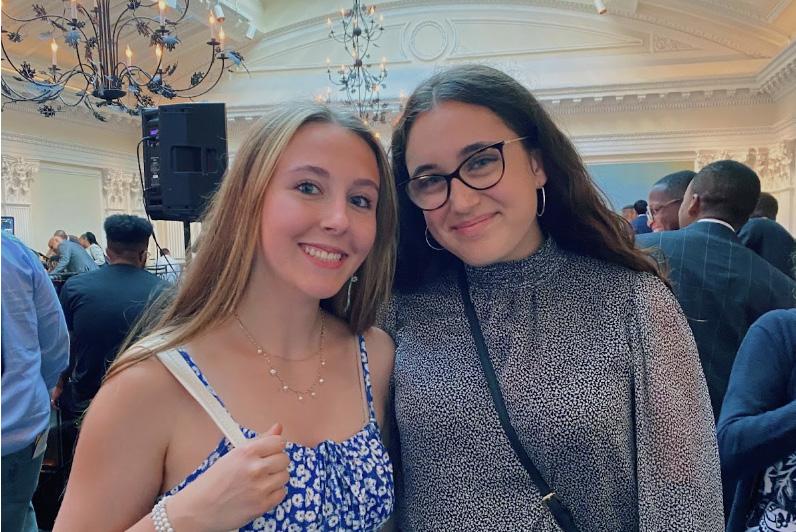
All of the attendees of the event were invited to an after-party at a very fancy restaurant. The walls were covered with wood moldings and gorgeous gold accents, art dotted the entirety of the building, and waitresses walked around with expensive champagne and hors d’oeuvres.
My friendly, talkative mother made a friend almost immediately, and she introduced me to a girl with curly hair and glasses. Mia Tretta was just a year younger than me, and she had also lost her best friend in a shooting at her high school. Mia stayed with me the whole night, introducing me to even more survivors and advocates. It was heartbreaking to see firsthand just how many people had gone through similar things, yet there was something so warm and powerful about being in a room full of people who would fight with you for as long as it took.
If I could take away the pain from everyone in that restaurant that night, I’d do it in a heartbeat. But the world doesn’t work like that. You cannot change what has already been done, but together we were going to prevent the same thing from happening to others. We were going to do everything in our power to ensure that we didn’t have to introduce ourselves to any more “new” survivors, to ensure that the room wasn’t going to grow any larger. That night, I learned the second lesson. I drank sparkling lemonade and laughed about normal things with kids like me who made me feel normal for the first time in six months.
We all knew that the bill we had watched President Biden sign into law wasn’t nearly enough. But we still laughed, hugged, ate, and drank together. One night to appreciate ourselves and each other, to rest, to recharge, before the cycle started over again. And it would start over. Again and again.
I went to DC two more times in 2022, in September and December. I met survivors
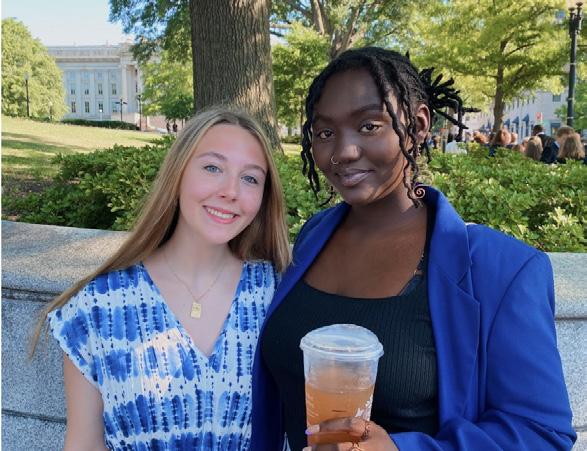
from Sandy Hook Elementary, Highland Park in Chicago, Uvalde, and Columbine. I met lawmakers, some empathetic, some faking their empathy. I attended a national vigil for all victims of gun violence, put on by Newtown Action Alliance, and I cried with the friends I’d met on these trips. I spoke more, and I got better at it.
That’s when I learned the third thing. I learned that no matter how lonely I felt, there (unfortunately) were tons of other people who wanted the change just as much as I did.
Since the start of 2023, my team and I have focused more on the Michigan legislature than the federal level. The need for gun sense laws in our state became even more blatant after an active shooter on Michigan State University’s campus killed three students, injured five, and left another school shattered.
I knew Oxford kids who went there. Kids who had graduated with me in ‘22, and were now Freshman at MSU. Kids who had now survived two mass school shootings. At that point, it became clear that gun violence was so rampant, it was going to affect everyone at some point. Even people who’d stayed silent after Oxford were finally starting to wake up and talk about it. It was hurtful that nothing changed after what happened at my school. Not only did our lawmakers not care about Madisyn, Justin, Tate, and Hana’s lives enough to make an effort, they also allowed three more kids to die before even talking about proposing something.
One of the most important days in my journey was when I went to a rally hosted by Giffords: Courage to Fight Gun Violence.
That day was also the first time I experienced the type of frustration that only counterprotestors can bring upon a person. There weren’t too many of them, maybe a dozen or so, but they held guns to intimidate, signs, and bullhorns. They talked over every single one of the speakers, including me. People played siren noises as I spoke. A Republican House representative chanted “liar” into the bullhorn when I talked about what happened to me. I had to practically scream into the microphone in order to drown them out.
That day, I was faced with the harsh reality that this was going to be a long, difficult journey. I realized that there were people that didn’t care that I could have died at school, or that my best friend did die at school, or that there were going to be a lot more deaths if they didn’t do their part to stop it. People will place the blame on absolutely anything when it comes to gun violence, except the actual guns themselves.
3. You don’t have to do this work alone. In fact, you cannot. There are always going to be people who will fight with you.
4. In your advocacy, there are going to be people who are going to do everything in their power to silence you. There are going to be selfish people who don’t care about you or your cause. And no matter what you tell these people, they are never going to put your rights before their self-interest.
That day took a lot out of me and my teammates. There are many days like that. That anger that I’ve felt since the shooting hasn’t gone away, and I don’t think it ever will. The grief is still there, and it grows in my heart on days like that one. I was so scared of dying that day. I’m always scared of dying, but when someone is screaming at you, holding an AR-15, and you call out their stupidity in front of a crowd, that fear feels more realistic. As I walked up to that podium, I saw a man holding up a large sign, preaching about the Second Amendment, and walking along the edge of the crowd. There was another man, someone supporting the rally, following his steps and blocking the counterprotester with his own sign.
Remember how I said it’s the little things? The simple act of this man, probably someone’s dad, shielding me from the other man’s hate was one of the kindest things anyone had ever done for me. Like the boy who asked AM I NEXT?, the simple act gave me all the courage I needed. And I delivered the best speech in my personal history of speech deliveries. After I was done, the crowd chanted my name. After the rally was done, people thanked me. Crying mothers thanked me for protecting their children. Students that had come to support gave me the tightest hugs.
That’s the thing about movements like the gun violence prevention one; there is so much empowerment and love. I’ve never seen any counterprotesters hug before. They wave don’t tread on me flags and tote their big firearms around and yell at traumatized students, but they don’t hug. They don’t uplift each other, or high-five, or even smile. I didn’t understand it for the longest time, but I think I do now.
People who yell over the voices of students begging for basic safety and security in school of all places are not people who are fighting with love in their hearts. They aren’t fighting for others; they’re doing it for themselves. But the gun violence prevention movement is far from selfish. Us advocates don’t do the work for ourselves. I don’t want any more people to live like I do. I don’t want anyone else to die. In this movement, we do what we do in hopes of preventing someone else’s child from dying. We put the lives
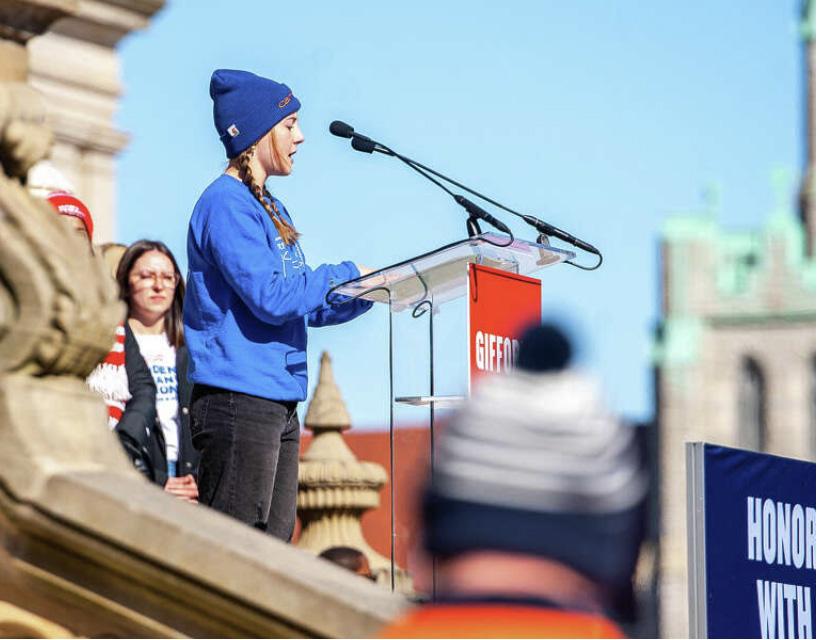
of others over what we want. Because let’s be honest; no one wants to be doing this. But it needs to be done.
That right there is love.
My year of advocacy has been full of ups and downs, confusion and anger, sadness and empowerment. But even in the darkest times, I wasn’t alone. All of the hate in the world can be suffocating. It can consume you, it can make you feel like you’re drowning. Hate can make you cower in fear and retreat with hopelessness, but it doesn’t have to win. So if you take anything at all away from reading this, remember to find the love. It isn’t hard to locate if you open your heart to it. It’s everywhere, and I promise it overpowers all of the hate.
5. Fighting for a certain cause, especially when it comes to human rights, can bring about a lot of hate. But if you look around, you’ll find that there’s also a whole lot of love. And the thing about love is that it will always win.
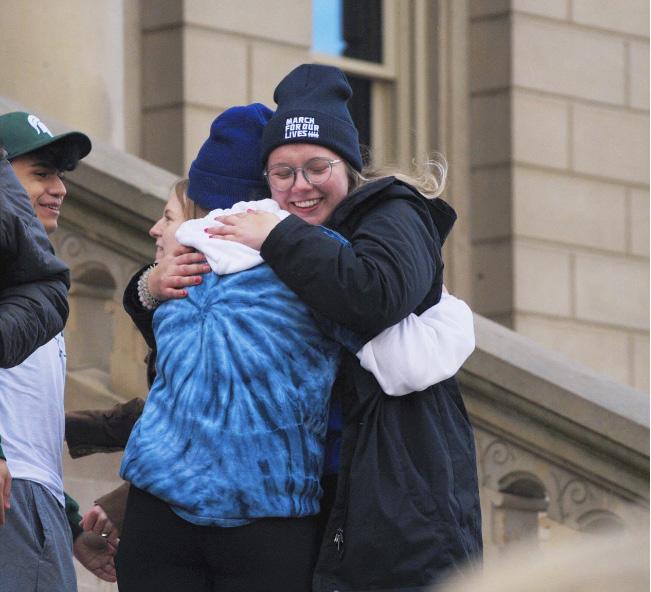
Whether you’re a part of the gun violence prevention movement or not, you can carry this with you. You can look for the love, the light, and the small acts of kindness that give you the strength you need. There will be villains in future history books that our future children will read, wide-eyed and curious. There will also be the icons that future generations will admire and look up to; the people who refused to sit by and watch others suffer. So when you wake up every morning, no matter who you are, what you do, or where you live, choose to be kind.
Choose to lead with love.
I never intended to be an organizer.
I was hired at Starbucks at a time of transition. I didn’t know it yet, but an organizing campaign was starting. I had just begun my first semester of college in a new city, and I needed a job. I had no idea how my life was about to change. During my training, I was alerted to the explosive movement that was beginning by seeing a Starbucks Workers United pin. It had been fastened carefully upon an apron, a sign of something that the person felt was important. I googled the Starbucks union campaign for the first time that night. People were quiet about it then; the first store to petition had only done so about a month prior.

My location unionized not long after. I wasn’t heavily involved then, as I wasn’t working much and didn’t truly understand what was going on. I would say that it wasn’t until a couple of months after we won our vote that I grasped the importance of organizing. I watched the company that claimed to be so progressive break down my tenured coworkers. It took from them until they had nothing left to give, then discarded them as if they had never been there. We had no power under the company. Then we went on strike for the first time.
Solidarity is a feeling that can’t be grasped until you’ve experienced it. There’s something incredibly special about standing with your team and knowing every single person cares about your cause and taking care of each other just as much as you do. My fellow partners had decided they had had enough, and we were going to do something about it. We decided we had power. That day is one that I will never forget. People from other stores and other unions chose to take time out of their days to support us. Partners who no longer worked at our store showed up. Even our customers stopped by and stood with us. We were on top of the world, and no one could take that from us.
A month later the company decided to strike back. They unjustly fired one of our lead organizers who had been very vocal about our working conditions and union campaign to the media. I think they anticipated that would break us after all that we had endured since the campaign started. It did the opposite. When the person being fired reached out for a union rep, people we had never met showed up for him. The café was filled with supporters. My entire store walked out and went on strike. Our strike lasted for weeks. We refused to accept unfair treatment and retaliation. Everyone was on board. Once again, the community and former partners showed up for us every day for weeks. My fellow partners were willing to accept a pay cut and possible retaliation to stand up for what we all knew was right.
After seeing that, I became heavily involved. I took on a leadership role because this campaign and the people I work with are immensely important to me. I want to improve the lives of the people I work with and the people who come after us. I can’t afford to let it fall apart. Winning our vote was the easy part. It was what came after that was hard. We’re still fighting every single day for our rights and our contract, but we aren’t falling back. Our movement has only grown.
When I look back to before I began organizing, I see an entirely different version of myself. This union campaign has shaped who I am. I’ve learned the values of leadership. I’ve never been a brave person, but I’ve learned to act brave. I have an entire team of people relying on me, and I need to protect them. They trust my judgment and advice. Building support isn’t the hard part, despite what the company I work for seems to believe. By simply offering kindness and assistance to each of my coworkers and building relationships with them, I can create a culture of support. The unfair treatment we experience from the company is what pushes people to join us. I’ve also learned to allow myself to rely on others and let them step up, as the leaders that came before me did.
There are challenges associated with organizing an industry that is “unorganizable.” We have a high turnover rate, which is something that is meant to hinder us. I’ve found the opposite. Every new person that comes in is an opportunity. New partners hear our stories and want to join us. They haven’t been burnt out by the intense work that we’ve had to do, and new leaders step up every single day. A soulless corporation will never understand how much people care for each other and are willing to fight, but I see it every day. It’s hard to be a leader when you feel alone, but I’m never truly alone. Solidarity ensures that. The union isn’t some third party; WE are the union.
Starting a new campaign isn’t easy, especially in a new industry and using methods that haven’t been tried before. It’s scary to do the impossible. I think it’s important for new organizers to know that they aren’t alone. Relying on your organizing committee is important. It’s made to seem like the cards are stacked against you, but they aren’t. People naturally want to take care of each other and improve their lives. The unionbusting does the hard part. As organizers, we have to know how to rally our team around that. Often when I want to move my team to action or get them more involved, I just wait for the employer to anger them.
Organizing has truly shaped my life. It unlocked a passion for workers’ rights that I will always carry with me. I’ve met some of the most amazing people because of this campaign, and I’ve had experiences that I wouldn’t trade for the world. Every single day I fasten my union pin to my apron with care, just like the barista I met during my training. Making history is hard. Organizing is exhausting work. But it’s also the most important thing I’ve ever done.
In the summer of 2010, my life was uprooted in response to the gang violence occurring in Central America. My maternal grandfather was shot dead by a member of a gang in Guatemala. As a result, my parents deemed Guatemala, our native country, to be unsafe for raising children. Later, for a Latin American Studies course during my senior year of high school, I researched and discovered that the gang issues that plagued Guatemala and other Central American countries were an aftermath of the countries’ tragic history during the Cold War.

Yamalí Rodas Figueroa (they/ them) is a queer, Guatemalan immigrant, youth organizer from the southside of Chicago. Yamalí’s activism and advocacy efforts focus on civic engagement
The Civil War in Guatemala began in the 1960s due to the repressive government’s perpetuation of political and economic inequities that were especially harmful to Indigenous people of Mayan descent. As an act of resistance, the Mayan people formed various guerilla groups to challenge the government, and in the 1970s, the Guerrilla Army Of The Poor (EGP Ejército Guerrillero de los Pobres) was formed. In 1980, the Guatemalan government, with support of USbacked forces, aimed to end the guerilla movement and specifically targeted the Mayan population and anyone suspected of involvement with the guerillas. In the end, the USbacked Guatemalan military government was responsible for the killing or “disappearance” of nearly 200,000 Indigenous people. This tragic event in history is also known as the Silent Holocaust and it directly impacted my family. In the 1980s, my paternal great grandfather was kidnapped by the Guatemalan government and accused of guerilla involvement. He shared that he had been rescued by the guerillas from being murdered at the hands of the USbacked Guatemalan government officials. The direct link I have to this historical event makes it very personal and pushes me to learn more about the ways systems have marginalized people in my community and beyond.
The US believed it important to stamp out the guerilla movement as part of its effort to end the spread of communism. During El Salvador’s Civil War in the 1980s, guerillas and civilians were also targeted by USbacked forces. Refugees from both Guatemala and El Salvador fled up north for sanctuary from the ongoing warfare. However, when they arrived, they were not granted refugee status and had to live in the States as “undocumented immigrants’’ with limited access to resources and opportunities. The impoverished living conditions of undocumented immigrants drove some to commit nonviolent crimes that landed them in jail. During their imprisonment, it is believed that some of these individuals turned to gangs as a means of survival inside US jails and prisons. This dynamic produced the sociological phenomenon known as the Mara Salvatrucha, or MS13, notorious as the most dangerous gang in the world. The Clinton administration responded to the gangs by enforcing harsh immigration policies deporting foreignborn residents to the Northern Triangle countries of El Salvador, Honduras, and Guatemala. This led to the ongoing cycle of migration, deportation, and violence, with no direct way to disrupt the pattern. To this day, Central American families similar to mine continue migrating north to escape the terrorizing gangs and to seek better conditions.
While transitioning to my new American life in hopes of achieving the American dream, I was pressured into assimilation. I was five years old and had no understanding of why I had to leave my home. I questioned everything. “¿Pero por qué, Mami?” This was my rejection of assimilation. I did not want to eat burgers from McDonald’s; I wanted my frijoles negros y platanos. I refused to listen and dance to Taylor Swift; I wanted my salsa music. I hated the snow; I missed my yearlong spring weather. Despite my resistance to assimilation, I gradually grew accustomed to the new American lifestyle.
Two years into our lives in the US, there was no significant improvement in our living conditions. Both of my parents worked long hours at lowwage jobs, so they rarely had time to spend with me. Gangs were as prevalent in Chicago as they had been back in Guatemala.
During the summer of 2012, as I was leaving my apartment complex to attend day care, a police officer asked me for my father’s whereabouts. Naively, I told the police officer, and my father was handcuffed and arrested in front of me. Out of desperation and the exhaustion of living paycheck to paycheck, my father had stolen money from an unattended gas station. He served a couple of years in the Cook County Department of Corrections, and eventually was deported back to Guatemala. As a young child, I had a binary understanding of ethics. I thought, “My dad broke the law. Therefore, he is a bad person and needs to deal with the consequences.” This thought process was a result of assimilating to America’s individualistic culture. Later on, this experience became embedded into my purpose for committing to social justice.
Without the support of my father, the family dynamics shifted and my mother became our sole provider. As the oldest of four children, I took on the responsibility of being the family caretaker and organizer. Through trial and error, I found a balance that stabilized my family. In retrospect, my familial responsibilities were my first realworld experience as an organizer. My siblings and I collaborated with one another to accomplish a shared goal, which was maintaining our family’s wellbeing and success.
Fast forward to 2019: I began high school and my family was no longer in survival mode. Although we did not need to worry about whether we could pay the rent or groceries, I continued to experience the effects of living in the constant struggle of survival. “Dude, you need to stop overworking yourself. Take a break.” I felt uncomfortable slowing down because I was hardwired to believe that as an immigrant I needed to be continuously productive if I wanted to take up space in this country. The ambitious, hardworking immigrant stereotype became one of my defining features. Later that school year, the global COVID19 pandemic began, and it launched my organizer career.
Despite the CDC guidelines to stay at home during the early days of the pandemic, undocumented immigrants had no option but to continue to work in order to provide for their families. As a former resident of Little Village, a Chicago community with a large undocumented population, I witnessed firsthand the impact of COVID19 on undocumented immigrants who were not given the option to work remotely and did not receive a stimulus check, leaving them physically and financially vulnerable. In addition to financial stressors, community residents faced an incident of environmental racism that led some of them to contract respiratory diseases. The diseases compromised their immune systems and left them susceptible to death from COVID19. I felt compelled to do something to address these injustices, which led me to initiate a mutual aid fund to address the immediate needs of these families amid pandemic.
In this work, I solicited sponsorships and grants from corporations as well as local organizations and businesses to fund the mutual aid program. I designed media content to promote a supply drive and spent hours walking around the neighborhood with local volunteers for community outreach. I used my bilingual abilities to communicate with Spanishspeaking residents to gather insight into their needs, which shaped the way we hosted events. The mutual aid program consisted of the distribution of essential items but it was also a space in which community organizations came together and shared immigrantrelated resources. In the process of organizing, I realized that grassroots efforts are the most impactful way to combat lack of resources in a community.
This grassroots organizing work was incredibly meaningful to me because I was able to make a tangible difference in the lives of undocumented immigrants who were experiencing financial and healthrelated challenges during the pandemic. As I
paraded through the crowds of people collecting the supplies they needed, I observed the interaction between the youth and older residents as they conversed, passing their distinct generational wisdom. These interactions filled me with warmth, joy, and hope, because community was being developed and nourished. This mutual aid program also allowed me to connect with other passionate and dedicated individuals who shared my commitment to social justice. The knowledge that we were making a real impact in the community and the feeling of fulfillment that came from serving the people encouraged me to continue organizing this program for the next three years.
On December 3rd, 2020, my 16yearold best friend Nanis was shot dead by a member of a gang on the southwest side of Chicago.
I replayed the events that led up to the moment I found out she was murdered. I was in remote learning, and I was taking care of my siblings. My online classes ended, and I received a package I ordered from Walmart it was a purple Crosley record player. Then, my sibling and I went to drop off a letter in the mailbox. I came home and recorded a TikTok.
“I do not know how to tell you honestly.” A close friend of mine sent me a screenshot from Facebook about Nanis’s death. Immediately following that text message, I received dozens of text messages and phone calls from people expressing concern for me. I took time to start to process, sobbing while my record player played the song “Money Trees” by Kendrick Lamar. I kept placing the needle to rewind Kendrick’s lyric: “Everybody gon’ respect the shooter; But the one in front of the gun lives forever.”
The following day, I organized a Zoom meeting and invited Nanis’s loved ones to attend. We took the time to share our memories of Nanis and just recognized her contributions to our lives. Over the following weeks, I seemed fine. I did not cry during her balloon release, funeral, wake, or when writing her eulogy. I remained strong and provided support for Nanis’s loved ones. I told myself that ruminating over her death was unproductive, and it would not bring her back to life. This was the thought process that had been ingrained into me as an immigrant in America.
I quickly found myself feeling overwhelmingly angry with the way that she died. Through my process of grief, I looked for people to blame, and at first, it was easy to blame the person that murdered her and the people that were supposed to keep her alive. Ultimately, I blamed myself for not being there for her. I carried that burden with me until I could no longer handle the weight of it.
The resilience that I had demonstrated toward challenging events throughout my life was how I had been taught to navigate. I took some time to unlearn the drive to dive into the next thing and not care for my own needs. This time around, I gave myself some grace and respected the processes of my grief.
In my close community, I noticed that gun violence was the cause of death of many Chicago youth. I realized that my experience was not an isolated one and that almost every person in my social circle was impacted to some extent by gun violence. The death of Nanis forced me to view the systemic trauma I endured with a sociological lens. This allowed me to examine root causes to make sense of complicated social issues such as gun violence, gangs, poverty, immigration, mass incarceration, and war. I also turned to research, looking into statistics and historical trends that illuminate the root causes of these social issues.
“Patoja, salistes igualita a tu Mami Ani.” My maternal grandmother Mami Ani was a community organizer in Guatemala. My family never fails to mention how my commitment to serve others reminds them of Mami Ani’s passion. Mami Ani’s experience with community organizing, along with the traditions of my native city Mazatenango, inspired me to create an event I cohost that aims to preserve and promote individual cultures.
Through navigating the hardships I experienced, I found spaces to channel my emotions and take leadership positions that enabled me to organize. I fostered a connection between my intersectional identity and my Chicago community through my role as cofounder and copresident of the Coalition of Immigrants at my high school. In partnership with the leadership teams of other affinity clubs, we hosted an annual Cultural Mixer. Together, we shared and uplifted each other’s cultures through dance, music, and games, while discussing how our intersectional identities create unique experiences. These conversations inspired a yearlong joint immigration reform awareness campaign within the school and wider community. I discovered the beauty of coalitionbuilding as we leveraged all the affinity clubs’ power toward collective action. It was the first time ever that my high school uplifted student voices in a way that was representative and inclusive of the student body.
I have struggled with the culture that was pushed onto me since crossing the border the culture that prevents members of a community from uplifting and helping each other. To organize against this means creating shared, collaborative spaces where members of various groups interconnect and foster community. Compassion, care, and coalition building can be the start of your organizing journey.
While organizing, I encountered so many humans from all walks of life with various demographics and backgrounds. Through our struggles and successes in organizing, I came to learn some valuable lessons. Firstly, every single one of us is a small piece of the bigger puzzle. No matter how much we feel like we don’t fit in, there is indeed a lane for us to own. We each possess something unique and valuable to contribute to the movement that differs from what another person may possess. Each of us have differing perspectives to see an angle which another may not see. All of us have something to offer the movement. Therefore, it is imperative to learn how to exist within our differences in order to unite.
My name is Alana McDonald, and I started community organizing in the wake of the 2020 uprisings. Through the experiences of pain,
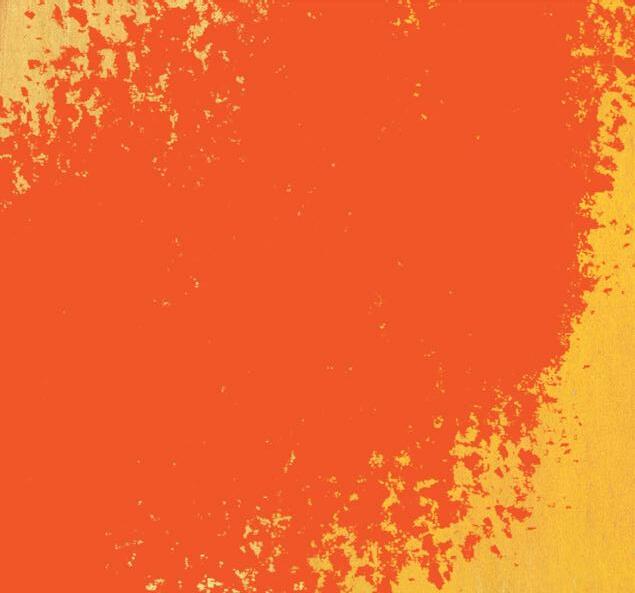
While organizing, I witnessed many of us disagreeing with and disapproving of one another’s strengths and ways of moving. This can be detrimental in strategizing toward that checkmate. I struggled to figure out who was right and who was wrong as organizing was brand new to me. I had this notion that we all had to move alike and speak alike. I thought we had to follow a leader in order to be powerful. It wasn’t until I was trying to build a snowsculpted fist by a business downtown that showed me otherwise. The movement itself is like a game of chess. Every individual human is a chess piece. Anything we are fighting for is the chess board. Each chess piece moves differently, possessing different strengths and abilities. All pieces on the board are after the same result to checkmate the opponent to win the game. To play chess wisely, it is important to think multiple moves ahead in preparation to counter our opponents’ decisions. When each piece is moved strategically moving within their own abilities, freedoms, and limitations checkmating becomes a greater possibility.
My comrades and I were chiseling away at a massive pile of snow that was leaned up against a parking structure. A security guard came by and told us to be careful as he was concerned we may fall from the mound and injure ourselves. We had a pleasant interaction with him, and he went on his way. Not too long thereafter, a second security guard approached us wearing a thinblueline mask. He wanted us to stop building this snowsculpted fist and claimed we were not allowed to play in the snow on their property. (The names I will be using in this
essay have been changed for confidentiality.) We were not about to cave in and agree to stop our mission. Instead, we used our collective people power and fought back.
The first person to step onto the chess board was Keelia. She came in with full force upset and angry that we were being targeted for playing in some snow. We could clearly see she was not okay, and she was unapologetically vocal to the security guard about it. She made a remark: “If we were white kids playing in the snow, you wouldn’t be saying sh*t to us!” My admiration for Keelia runs deep because she consistently ignites flames that set the bar off on a high note. She comes off as intense and unfiltered, and has a fiery presence in her to make the first move. Another young comrade Ben has a talent for being really slick at the mouth. He knows what to say to push your buttons. He was moving in a way that I could describe as being an agitator. Another comrade Ronald was cool and collected, but clearly was not agreeing with the guard. He was trying to bring reasoning so the guard would understand our cause. This guard was getting moved in on from multiple angles, from voices of different strengths. He was getting more defensive and agitated that we were defying his “authority.”
I was nearby watching all these dynamics at play. Watching and waiting for my opportunity to enter the game. When the guard said we needed approval to be playing in the snow, I found my opportunity. I asked him who it was that we needed to get approval from and asked for this important person’s contact information. The guard gave it to me, and I instantly called the number. It went to voicemail. I told the guard it went to voicemail and asked if there was someone else we could speak with. The guard said he happened to have that important person on the phone with him as he was complaining about all of us. I requested to take his cellphone to speak with this important person. As he was still in a circle of my comrades confronting him, he handed me his phone. In my sweetest innocent voice, I explained to this important person that we are a small group of community organizers making a snow sculpture to bring awareness to social justice causes. I explained to him that we were approached twice and that the second guard seemingly had an issue with us being in the snow even though the first guard said we were okay to do so. The voice on the other end of the phone gave us his blessing and urged us to be careful to not get crushed if the snow pile shifted. I assured him that we would be very cautious and thanked him for his time. He asked me to give the phone back to the guard. I then turned around and walked over to the circle and handed the phone back to the guard, looking him dead in the eyes. Without breaking eye contact with the guard, I smiled and said to my comrades, “Let’s get to work.” We broke the circle of confrontation and returned to the snow. Victory was ours!
Each of my comrades walked onto that board with different strengths, different abilities, different ways of speaking, different ways of moving. We ranged from zero to ten with our intensity levels, our volume, our body language, our tone of speech, and our choice of words. But we were all after the same goal to checkmate this game, so
we could continue what we set out to accomplish. The opposition had no choice but to figure out which one of us they were willing to come to terms with.
Sometimes you have to start with high intensity to make them uneasy, uncomfortable, and nervous. Sometimes you need to bait the opponent into making mistakes. Sometimes you have to be firm and straightforward. Sometimes you have to be soft and gentle to make them think you’re the least of their threats. Ultimately, it is up to the opposition to choose which chess piece they want to level with. I see this encounter as a form of strategy. Our fights within the movement are games of chess. Diversity is our strength. When we move as a collective of multifaceted beings, we increase our chances of securing that checkmate. Our collective people power possibilities are immeasurable. Therefore, it is important to not belittle our fellow comrades just because they move differently than you. That is their gift, just as you have your own unique gift. Collective people power is our greatest weapon. Use it to our advantage. Be patient with one another. Give grace and room for growth from our mistakes. Give space to ask questions to gain a deeper understanding. Most importantly, do not channel our righteous anger at one another for that weakens our ranks, and we lose valuable chess pieces. Channel that anger toward the giant we are trying to slay. Don’t forget who you are. Be sure to take care of your bodies, spirits, and minds. Be sure to rest as we need you at your best we still have a long way to go. And, most importantly, be gentle with yourself as you find your role within the movement, and don’t give up.
“If you can’t fly then run, if you can’t run then walk, if you can’t walk then crawl, but whatever you do, you have to keep moving forward.”
Dr. Martin Luther King, Jr.